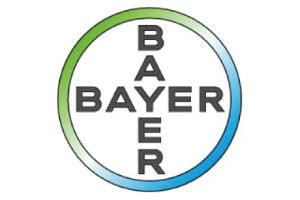Product Ref: BABAY43 Category: B

Royal Mail Tracked 24 (Signed For)

Royal Mail Special Delivery Guaranteed by 1pm

| Category | POM-V |
| Temperature | Ambient |
| MA/VM/EU No: | 00879/4123 |
| Species |
|
| VMD Link | https://www.vmd.defra.gov.uk/productinformationdatabase/files/SPC_Documents/SPC_415991.PDF |
| NOAH Link | |
| Dosage | Amounts to be administered and administration route Cattle: The dosage for respiratory disease is 7.5 mg enrofloxacin per kg body weight (BW) for a single treatment by subcutaneous administration (s.c.). This is equivalent to 7.5 ml of the product per 100 kg BW and day Do not administer more than 15 ml (cattle) or 7.5 ml (calf) per injection site (s.c.). In case of serious or chronic respiratory disease a second injection may be required after 48 hours. The dosage for the treatment of colimastitis is 5 mg enrofloxacin per kg body weight (BW) by intravenous administration (i.v.). This is equivalent to 5 ml of the product per 100 kg BW and day The treatment of colimastitis should be exclusively by intravenous application on 2 to 3 consecutive days. Pig: The dosage for respiratory tract infections is 7.5 mg enrofloxacin per kg body weight for a single treatment by intramuscular administration (i.m.). This is equivalent to 0.75 ml of the product per 10 kg BW and day Do not administer more than 7.5 ml per injection site (i.m.). In cases of serious or chronic respiratory disease a second injection may be required after 48 hours. Method of administration: Repeated injections should be made at different injection sites. Cattle: For subcutaneous injection (respiratory disease) or for intravenous injection (colimastitis). Pig: For intramuscular injection into the neck muscles behind the ear. To ensure administration of the correct dosage, body weight should be determined as accurately as possible to avoid underdosing. The stopper may be safely punctured up to 20 times. 4.10 Overdose (symptoms, emergency procedures, antidotes), if necessary In cattle a dose of 25 mg/kg bodyweight administered by the subcutaneous route for 15 consecutive days is tolerated without any clinical symptoms. Higher doses in cattle and doses of around 25 mg/kg and above in pigs may cause lethargy, lameness, ataxia, slight salivation and muscle tremors. Do not exceed the recommended dose. In accidental overdose there is no antidote and treatment should be symptomatic. |
| Withdrawals | Cattle: Meat and offal: s.c.: 14 days i.v.: 7 days Milk: s.c.: 120 hours i.v.: 72 hours Pig: Meat and offal: 12 days |